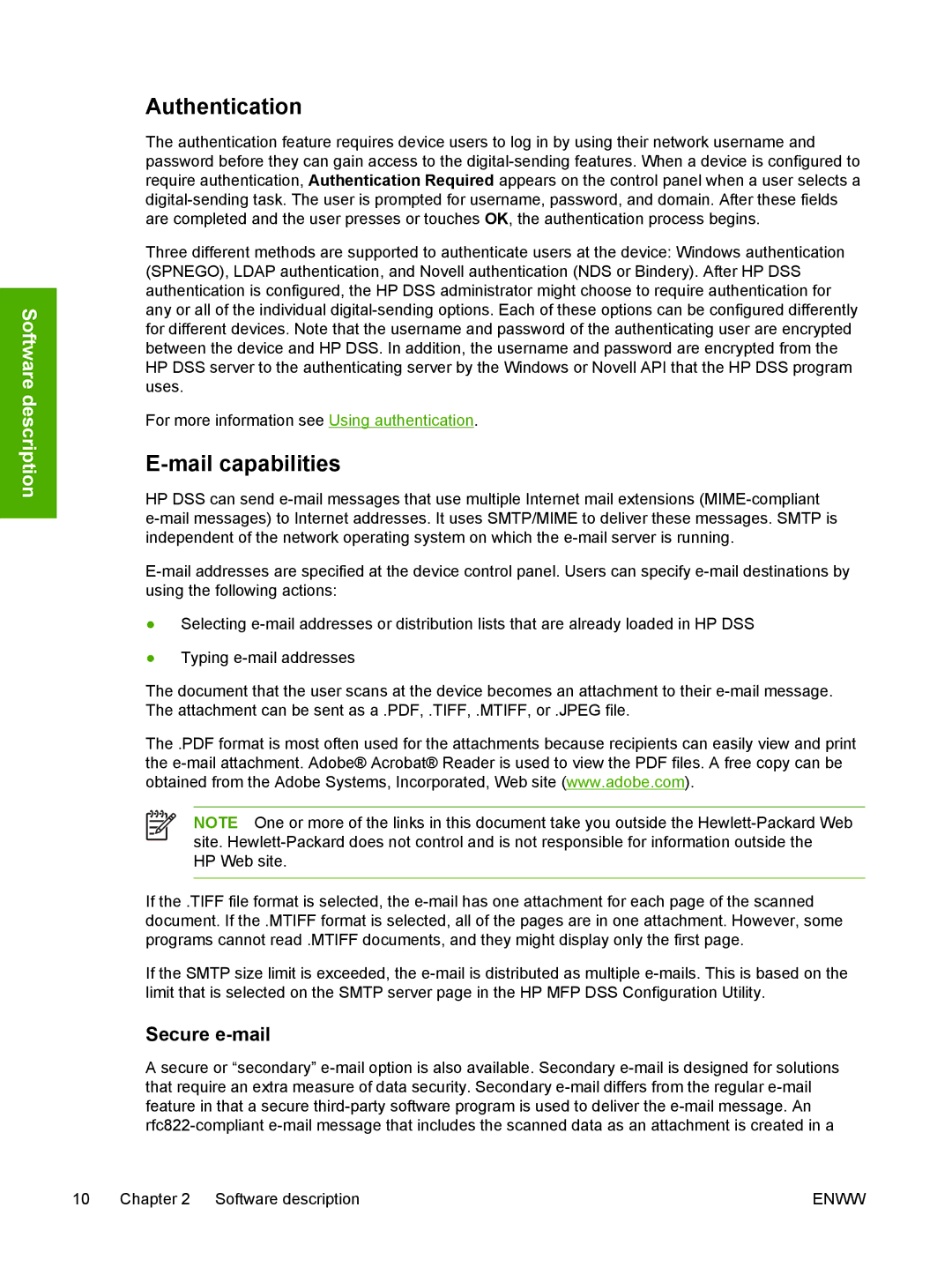Authentication
The authentication feature requires device users to log in by using their network username and password before they can gain access to the digital-sending features. When a device is configured to require authentication, Authentication Required appears on the control panel when a user selects a digital-sending task. The user is prompted for username, password, and domain. After these fields are completed and the user presses or touches OK, the authentication process begins.
Three different methods are supported to authenticate users at the device: Windows authentication (SPNEGO), LDAP authentication, and Novell authentication (NDS or Bindery). After HP DSS authentication is configured, the HP DSS administrator might choose to require authentication for any or all of the individual digital-sending options. Each of these options can be configured differently for different devices. Note that the username and password of the authenticating user are encrypted between the device and HP DSS. In addition, the username and password are encrypted from the HP DSS server to the authenticating server by the Windows or Novell API that the HP DSS program uses.
For more information see Using authentication.
E-mail capabilities
HP DSS can send e-mail messages that use multiple Internet mail extensions (MIME-compliant e-mail messages) to Internet addresses. It uses SMTP/MIME to deliver these messages. SMTP is independent of the network operating system on which the e-mail server is running.
E-mail addresses are specified at the device control panel. Users can specify e-mail destinations by using the following actions:
●Selecting e-mail addresses or distribution lists that are already loaded in HP DSS
●Typing e-mail addresses
The document that the user scans at the device becomes an attachment to their e-mail message. The attachment can be sent as a .PDF, .TIFF, .MTIFF, or .JPEG file.
The .PDF format is most often used for the attachments because recipients can easily view and print the e-mail attachment. Adobe® Acrobat® Reader is used to view the PDF files. A free copy can be obtained from the Adobe Systems, Incorporated, Web site (www.adobe.com).
NOTE One or more of the links in this document take you outside the Hewlett-Packard Web site. Hewlett-Packard does not control and is not responsible for information outside the
HP Web site.
If the .TIFF file format is selected, the e-mail has one attachment for each page of the scanned document. If the .MTIFF format is selected, all of the pages are in one attachment. However, some programs cannot read .MTIFF documents, and they might display only the first page.
If the SMTP size limit is exceeded, the e-mail is distributed as multiple e-mails. This is based on the limit that is selected on the SMTP server page in the HP MFP DSS Configuration Utility.
Secure e-mail
A secure or “secondary” e-mail option is also available. Secondary e-mail is designed for solutions that require an extra measure of data security. Secondary e-mail differs from the regular e-mail feature in that a secure third-party software program is used to deliver the e-mail message. An rfc822-compliant e-mail message that includes the scanned data as an attachment is created in a

